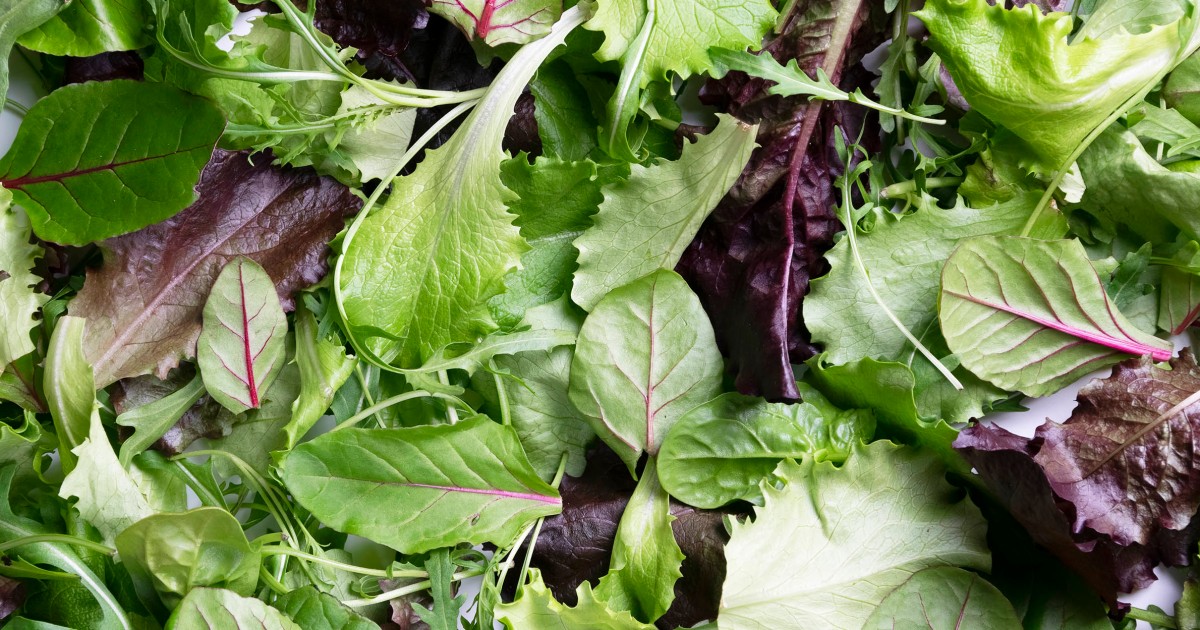Olives are a popular salty snack and flavorful addition to meals. Whether you like to enjoy olives on their own, in a salad, or as a cocktail garnish, you may be wondering if these tiny flavor bombs are good for you.
Are olives healthy? Which type of olive is healthiest? And what exactly are olives, anyway? Dietitians discuss the nutrition content of olives, health benefits, their downsides and the healthiest types.
What are olives?
“Olives are small, savory fruits that are native to Mediterranean regions,” Heather Hodson, clinical nutritionist at the Center for the Prevention of Cardiovascular Disease at NYU Langone, tells TODAY.com.
Although they’re savory, olives are a fruit because they come from the flower of the olive tree and contain a seed, or pit. “They fall into the stone fruit family (with) cherries and peaches,” says Hodson.
Raw olives are extremely bitter thanks to a compound called oleuropein, and need to be cured before they can be eaten, registered dietitian Frances Largeman-Roth tells TODAY.com.
“Following harvesting, olives undergo a curing process which removes the oleuropein and makes them palatable. This involves curing them in brine or lye solution, water or dry salting,” says Hodson. Olives may be sold packed in water, brine, or oil.
There are hundreds of olive varieties — including manzanilla, kalamata, or castelvetrano — which may come from different olive tree varieties grown in specific regions.
However, the difference between green and purple or black olives comes down to ripeness. “All olives start out green and will turn black over time,” says Largeman-Roth. Depending how ripe the olive is when it’s harvested, this affects the color, texture and flavor.
Olive nutrition overview
The serving size and nutrient content can vary based on a variety of factors, says Hodson, including the size and type of olive. Generally, one serving is 5 to 10 olives (or 15 to 30 grams). According to the U.S. Department of Agriculture, 10 green olives contain:
- Calories: 58
- Fat: 6 grams
- Carbohydrates: 1.5 grams
- Fiber: 1.3 grams
- Protein: 0.4 grams
- Sodium: 620 milligrams
“Olives also contain iron, copper and Vitamin E, as well as a small amount of calcium and magnesium,” says Hodson.
“When you look at their macronutrient composition, olives are more of a fat than a carb or protein,” Julia Zumpano, registered dietitian with the Cleveland Clinic Center for Human Nutrition, tells TODAY.com. “But the fat in olives is healthy, good fat,” she adds.
Are olives healthy?
Olives are healthy when eaten in moderation and as part of a balanced eating plan, the experts note. Love them or hate them, olives are small but mighty nutritional powerhouses.
“Olives are generally considered a nutrient-dense food and serve as a great source of heart-healthy fats monounsaturated fats,” says Hodson.
“They’re low in carbs, give you some fiber, and they’re packed with vitamins, minerals and antioxidants,” Zumpano adds.
Olives are also naturally low in calories, have virtually no sugar, and are a whole food, says Largeman-Roth. In cooking, olives can be used to add saltiness to dishes instead of table salt. “They’re the perfect thing to add to provide extra flavor and nutrients,” Largeman-Roth adds.
Health benefits of olives
The nutrients in olives are associated with several health benefits. According to the experts, eating olives may help to:
- Protect heart health
- Lower cholesterol
- Reduce inflammation
- Manage blood sugar
Olives have been associated with improved cardiovascular health. The healthy monounsaturated fats in olives “helps to lower total cholesterol and LDL (bad) cholesterol, while also improving the ratio of HDL (good) to LDL cholesterol,” says Largeman-Roth.
Oleic acid, a monounsaturated fatty acid found in olives, has also been shown to help decrease blood pressure, Zumpano notes.
The olive fruit also contains phytonutrients which help fight inflammation and provide antioxidant benefits, Largeman-Roth adds. These include vitamin E and quercetin, which have been shown to combat oxidative stress and help protect the cells from damage caused by free radicals, the experts note.
The nutrients in olives may lower the risk of cancer and other chronic diseases.
“Olives (are) a fair source of iron, which is important to transport oxygen from your red blood cells, and a good source of copper,” says Zumpano. The calcium in olives is essential for bone health, muscle and nerve function, she adds.
Although olives contain little protein, they are a good source of fiber and low in carbohydrates, which can help manage blood sugar, the experts note. Thanks to their fat content, olives are filling and satisfying, says Zumpano, which can help curb hunger.
Are olives as healthy as olive oil?
The fats in olives are extracted to produce olive oil, which is one of the healthiest cooking oils to use. “Many of us associate olive oil with the Mediterranean diet, which research has found to be one of the best dietary patterns for supporting cardiovascular, endocrine, and brain health,” says Hodson.
Olives and olive oil, when consumed in moderation, are both healthy but differ in nutritional value, the experts note.
Compared to whole olives, olive oil contains a higher concentration of monounsaturated fatty acids and antioxidants, says Hodson. “Think about how many olives you have to press to make olive oil,” says Zumpano, adding that this concentrates the nutrients and benefits.
While olives can be high in sodium, olive oil only contains about two milligrams of sodium per one-tablespoon serving, says Hodson. If you’re looking to get the healthy fats from olives without the extra salt, olive oil may be a better option.
“However, the olive fruit offers fiber and other nutrients,” says Hodson. Olives are also a whole food, whereas olive oil is used in smaller amounts for cooking. If you’re looking for nutrients and sustenance, olives are your best bet.
“Both are valuable options for a heart-healthy diet,” says Hodson.
What type of olive is the healthiest?
Nutritionally, there isn’t a major difference between green and purple or black olives. “I don’t know that there’s data that shows one type of olive is superbly (healthier) than another,” says Zumpano. However, each type of olive may contain slightly different amounts of certain nutrients.
Green and kalamata olives typically have higher levels of some antioxidants (such as anti-inflammatory polyphenols) compared to black olives, says Hodson.
However, black olives are slightly higher in iron. Some research shows that other beneficial plant compounds increase in olives as they mature and turn black, says Largeman-Roth.
What matters more than the type of olive is how they’re processed and packed, Zumpano notes. Healthier olive varieties contain whole ingredients and minimal additives. Opt for fresh or jarred olives over canned, and choose those in a brine with water or a healthier oil, such as extra virgin olive oil, says Zumpano.
Are there any downsides to olives?
Olives are safe for most people to eat, but one downside is that they are often high in sodium, the experts note. “Depending on the curing process, there could be over 200 milligrams of sodium in just three olives,” says Largeman-Roth.
Generally, this is not a concern for healthy people who stick to the recommended serving size of olives and don’t go over the daily limit for sodium — which is 2,300 milligrams a day, per the American Heart Association.
However, the sodium in olives can be an issue for people who need to restrict their sodium intake, such as individuals with high blood pressure, heart failure or kidney disease, says Hodson. “It’s important for (these) people to check the nutrition facts and keep portion size in mind,” she adds. Always talk to your doctor if you have questions.
Can you eat olives every day?
“Olives can be eaten daily in moderation and as part of a balanced diet, but keep sodium content in mind, especially if you’re monitoring your salt intake,” says Hodson.
If you’ve already consumed a lot of salt in one day, “stick to just a few,” says Largeman-Roth.
Since olives are relatively high in fats and much more calorically dense than other fruits or vegetables, portion control is important, Hodson notes.
Read the full article here
















